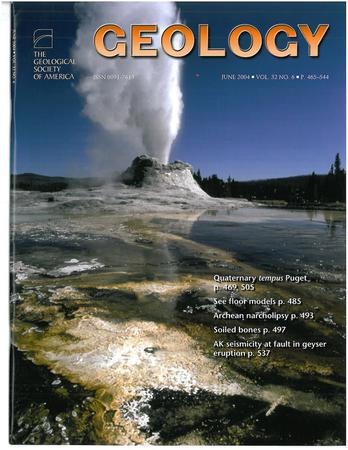Mechanisms of nitrogen isotope fractionation at an ancient black smoker in the 2.7 Ga Abitibi greenstone belt, Canada
IF 4.6
1区 地球科学
Q1 GEOLOGY
引用次数: 0
Abstract
The biological nitrogen (N) cycle on early Earth is enigmatic because of limited data from Archean (meta-)sediments and the potential alteration of primary biotic signatures. Here we further investigate unusual 15N enrichments reported in 2.7 Ga meta-sediments from the Abitibi greenstone belt, Canada, purportedly related to a 15N-enriched Archean atmosphere. Given that sediments from this region are contemporaneous with large-scale volcanogenic massive sulfide deposits, we utilize Cu and Zn contents to trace the effects of hydrothermal circulation on N isotope fractionation. We show that high δ15Nbulk values as high as +23‰ are associated with Cu-Zn mineralization, whereas unmineralized organic-rich shales exhibit much lower δ15Nbulk and δ15Nkerogen values. Moreover, we find a large offset between δ15Nbulk and δ15Nkerogen of as much as 17‰ and relate this to the addition of organic-bound N during the late-stage emplacement of organic-rich veins. We conclude that the previously reported high δ15N values are most parsimoniously explained by biotic and abiotic mechanisms rather than a 15N-enriched atmosphere. Crucially, both mechanisms require the presence of NH4+ in hydrothermal fluids, supporting the hypothesis that hydrothermal discharge was an important nutrient source for Neoarchean marine life.加拿大阿比提比绿岩带 2.7 Ga 古代黑烟炉的氮同位素分馏机制
早期地球上的生物氮(N)循环是一个谜,因为来自Archean(元)沉积物的数据有限,而且原始生物特征可能被改变。在这里,我们进一步研究了加拿大阿比提比绿岩带 2.7 Ga 元沉积物中报告的异常 15N 富集,据称这与 15N 富集的 Archean 大气有关。鉴于该地区的沉积物与大规模火山成因块状硫化物矿床同时存在,我们利用铜和锌的含量来追踪热液循环对 N 同位素分馏的影响。我们发现,高达+23‰的δ15Nbulk值与铜锌矿化有关,而未矿化的富含有机质页岩的δ15Nbulk和δ15Nkerogen值则低得多。此外,我们还发现δ15Nbulk与δ15Nkerogen之间存在高达17‰的巨大偏移,这与富含有机质的矿脉在后期置换过程中增加了有机结合氮有关。我们的结论是,以前报道的高δ15N值最有可能由生物和非生物机制而不是富含15N的大气层来解释。最重要的是,这两种机制都需要热液中存在 NH4+,这支持了热液排放是新石器时代海洋生物重要营养源的假说。
本文章由计算机程序翻译,如有差异,请以英文原文为准。
求助全文
约1分钟内获得全文
求助全文
来源期刊

Geology
地学-地质学
CiteScore
10.00
自引率
3.40%
发文量
228
审稿时长
6.2 months
期刊介绍:
Published since 1973, Geology features rapid publication of about 23 refereed short (four-page) papers each month. Articles cover all earth-science disciplines and include new investigations and provocative topics. Professional geologists and university-level students in the earth sciences use this widely read journal to keep up with scientific research trends. The online forum section facilitates author-reader dialog. Includes color and occasional large-format illustrations on oversized loose inserts.
 求助内容:
求助内容: 应助结果提醒方式:
应助结果提醒方式:


